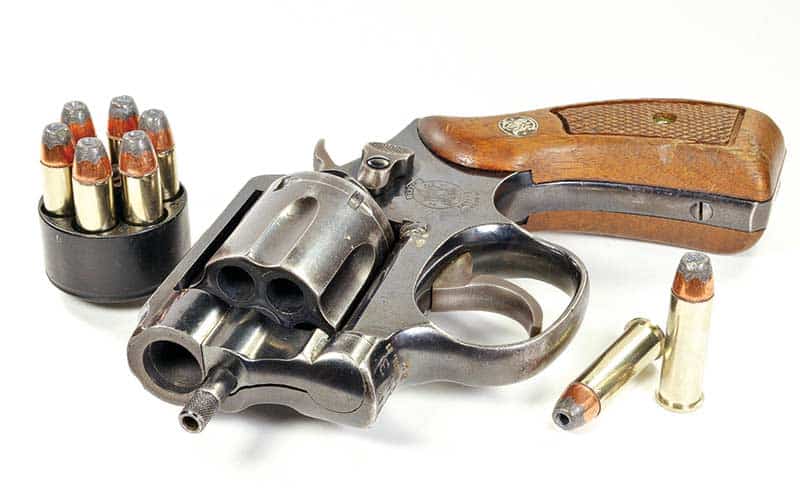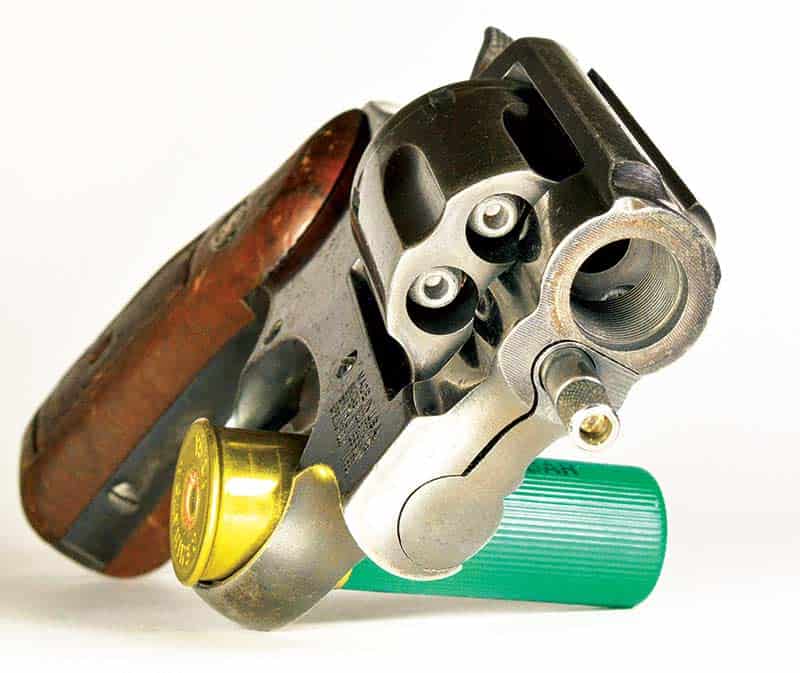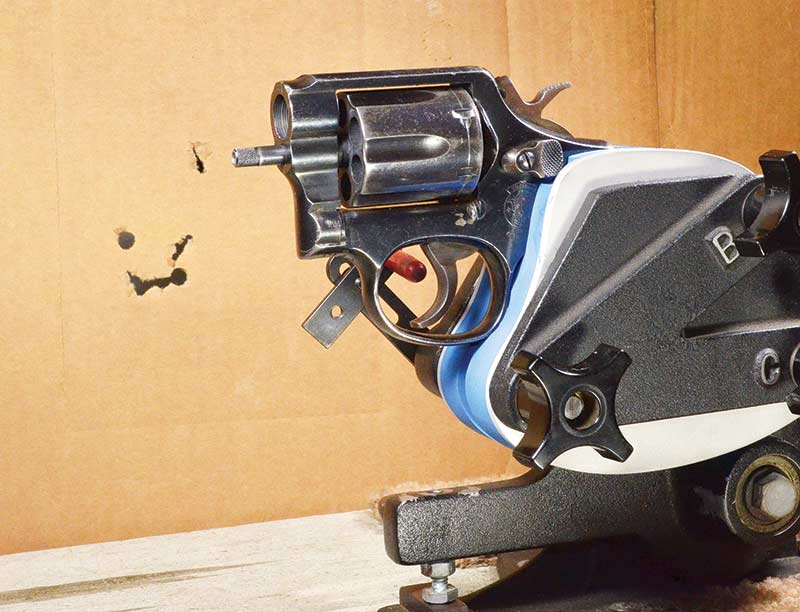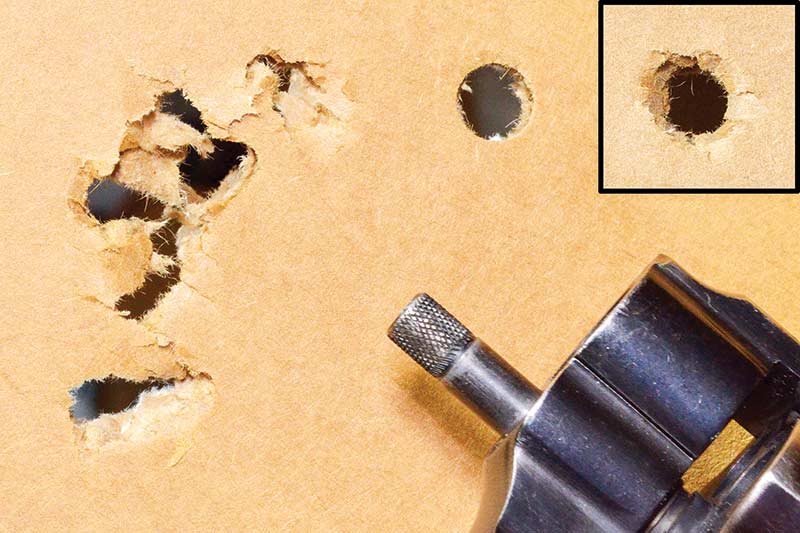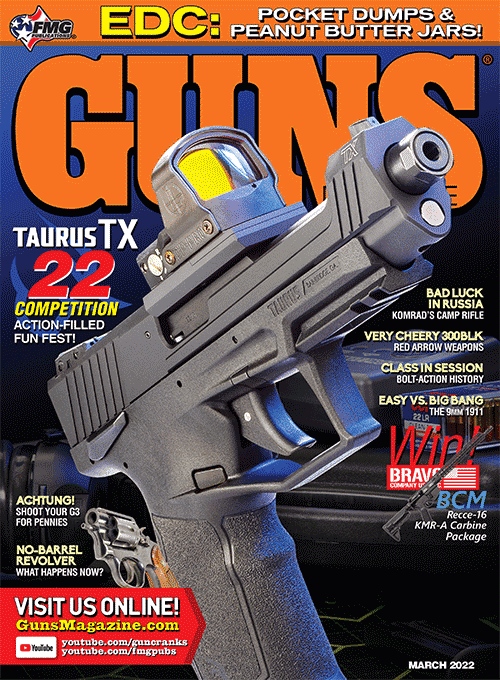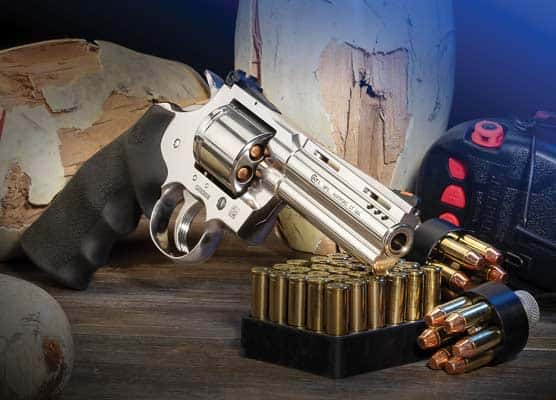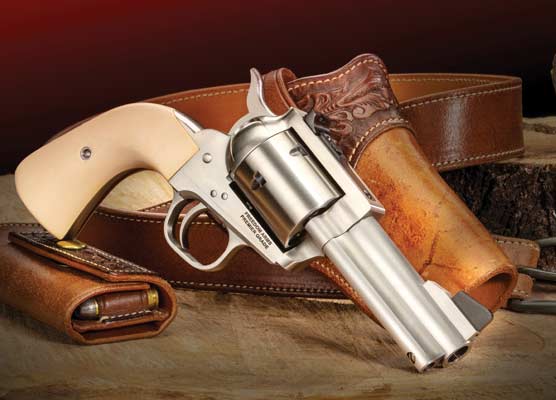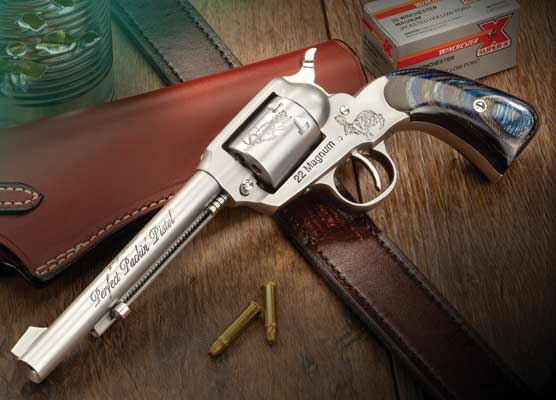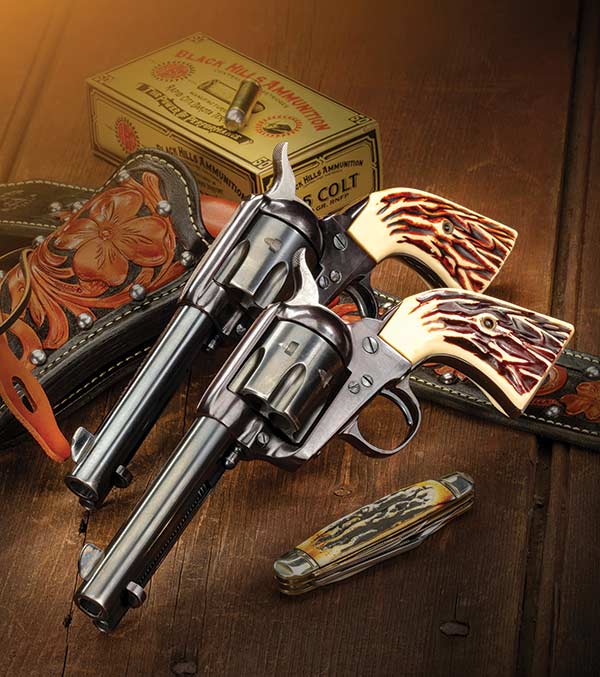Who Needs A Barrel?
Thoughts from the test bench
Firearms are tools — we use them for hunting, recreation, competition and defense. They are machines. Ammunition is based on science. A propellant is used to accelerate the projectile(s) down the bore.
The gun and the ammunition must work in concert to get the projectile(s) on target, though the shooter has to do his part, too. Many features of the gun contribute to how the ammunition performs. The barrel, obviously, has a huge part in this. Ballistic performance depends on barrel length. Longer barrels produce more velocity, all else being equal.
The chamber holding the cartridge is part of the barrel for rifles, shotguns and handguns aside from revolvers. Revolvers separate the chamber and the barrel. Thus, a revolver can fire even with no barrel. What happens when you do this, and what can you learn from it? What kind of velocity would you get? How about accuracy? I looked into it.
Test Platform
J&G Sales had an S&W Model 10 .38 Special revolver with no barrel. These are sold as “gunsmith specials” that usually lack all the parts of a working gun. The guns are used, with various amounts of wear. The Model 10s had everything except the barrel. I ordered one.
I received a model 10-7 with a three-letter serial number prefix, placing it as being made around 1987 to 1988. It had an import stamp, indicating it was sent out of the country at some point in its life then reimported.
What velocity can you get when firing from just the cylinder? Two things affect this. One is the rapid rise of gas pressure as the powder burns. The other is the design of a revolver’s chamber. Revolver chambers have two parts — the chamber where the cartridge fits and a throat feeding the bullet into the barrel.
The throat acts a little like a mini-barrel as the bullet passes through because it seals most of the gas pressure as the bullet is pushed out of the cylinder. Chamber throats on this gun are about 0.480″ long. Throats are (generally) slightly larger than the bullet diameter, but usually only a thousandths of an inch or two.
On this gun, the chamber throats were a little tight. They would allow a 0.357″ jacketed bullet to be pushed through, though most required a little effort. There was no way I could push a 0.358″ jacketed bullet through them unless I wanted to use a hammer. I didn’t. My gun’s throats were tight, but even if the throat is 0.001″ to 0.002″ larger than the bullet, it’s a really small space for gas to go through and there is very little time for this to happen.
When a round is fired, chamber pressure rises very quickly and peaks soon after the bullet starts to move. How soon does this happen? I used handloads so I could plug my load data into Quickload ballistic software to help explain what happens during the firing process. One load was a 158-grain Nosler JHP bullet and 4.8 grains of Unique gunpowder loaded to 1.440″ overall length.
Quickload ballistic software estimates this load will reach peak chamber pressure after the bullet has moved about 0.36″. In this gun, the bullet’s nose is just 0.18″ from the end of the cylinder. Traveling 0.36″ means the bullet would be mostly still in the cylinder throat, with only 0.18″ of the nose past the end of the cylinder. The Nosler bullet, which is 0.680″ long, has to travel 0.860″ to exit the cylinder so the pressure has peaked and started to drop before the bullet has exited.
The point is the bullet is getting a high-pressure push from the start. This article demonstrates what kind of velocity it can achieve from just the cylinder.
Two loads were fired in the barrel-less Model 10, and for comparison, an S&W Model 360 .357 Magnum revolver with a 1.875″ barrel. One load was described above. The other load was a 125-grain Remington SJHP loaded with 6.5 grains of Power Pistol to 1.420″ overall length. These are both full power .38 Special loads.
The Results Are In
Average speed of the 125-grain bullet was 661 fps with no barrel. In the 1.875″ barrel it averaged 883 fps. The 158-grain bullet averaged 524 fps with no barrel and 665 fps from the 1.875″ barrel.
I found these numbers very impressive. The 125-grain load fired from just the cylinder reached 75% of the speed it would with a 1.875″ barrel. The 158-grain load reached 79% of the speed it would with a 1.875″ barrel — the very fast rise in peak chamber pressure gets the bullet moving fast!
No-barrel ballistics with the 125-grain bullets are around what I get with .38 Short Colt ammunition. For example, Remington .38 Short Colt with a 125-grain lead bullet clocks at 612 fps from a 1.875″ S&W 340PD and at 699 fps from a S&W Model 67 with a 4″ barrel. My 661 fps with no barrel is in the middle of this range. That’s decent ballistics for a barrel-less gun.
What about accuracy? Normally, bullets are spin stabilized as they go through the barrel by the twist of the rifling and without this stability, bullets can tumble. Naturally, I was curious about what the bullets would do with no barrel.
I initially fired the gun by hand at 10 feet, but without a front sight I was guessing if I was pointing it at the same spot for every shot. I decided to do the accuracy test the “right way” and put it in a Ransom Rest. This device points the gun at the exact same spot for every shot.
Accuracy was better than I expected and the bullets were surprisingly not widely dispersed. I fired six shots of the 125-grain load at three different distances. When fired at 10 feet, six shots had a spread of 2.09″. At 15 feet they were spread to 2.61″ and at 21 feet they spread to 4.44″. Heck, these groups are better than some people can shoot. I might or might not be in this category. I’m pleading the fifth.
Even though the groups were surprisingly good, the bullets were tumbling. At 10 feet, all the bullets tumbled. Five bullets hit the target sideways. One bullet had tumbled 180º and hit squarely with the base, “cookie cutting” a perfectly round hole like a wadcutter bullet would do. When these semi-jacketed hollow point bullets hit paper normally, the hole is circular and has a grease mark around the entire edge. I confirmed this by shooting them through another revolver with a 4″ barrel. The only way to make a cookie cutter hole is for the bullet to flip 180º and hit base-first.
Fifteen- and 21-feet targets had the same appearance of virtually every bullet tumbling, with at least one being a cookie-cutter hole. This should be no surprise since they are being fired from a “freebore” with no rifling to stabilize them.
Final Thoughts
This was an interesting little adventure. It showed how quickly a bullet could achieve high speed in a very short distance. The fast rise in chamber pressure produced surprisingly fast bullets when fired from just the cylinder. This is aided by the chamber throat that prevents most gas pressure from escaping so it can push the bullet to high speed in a short distance. Accuracy was surprisingly good. The bullets have a similar flight path as a result of passing through the narrow chamber throat but they freely tumble because they are not spin stabilized by rifling.
What’s next? This gun has an ejector rod for a 2″ barrel, so I bought one. It will be sweet to have a Model 10 belly gun — with a barrel!
Disclaimer: The author does not recommend readers try this. Neither the author nor the publisher is responsible for any mishaps that might occur if readers ignore this advice.

Get More Revolver Content Every Week!
Sign up for the Wheelgun Wednesday newsletter here:
